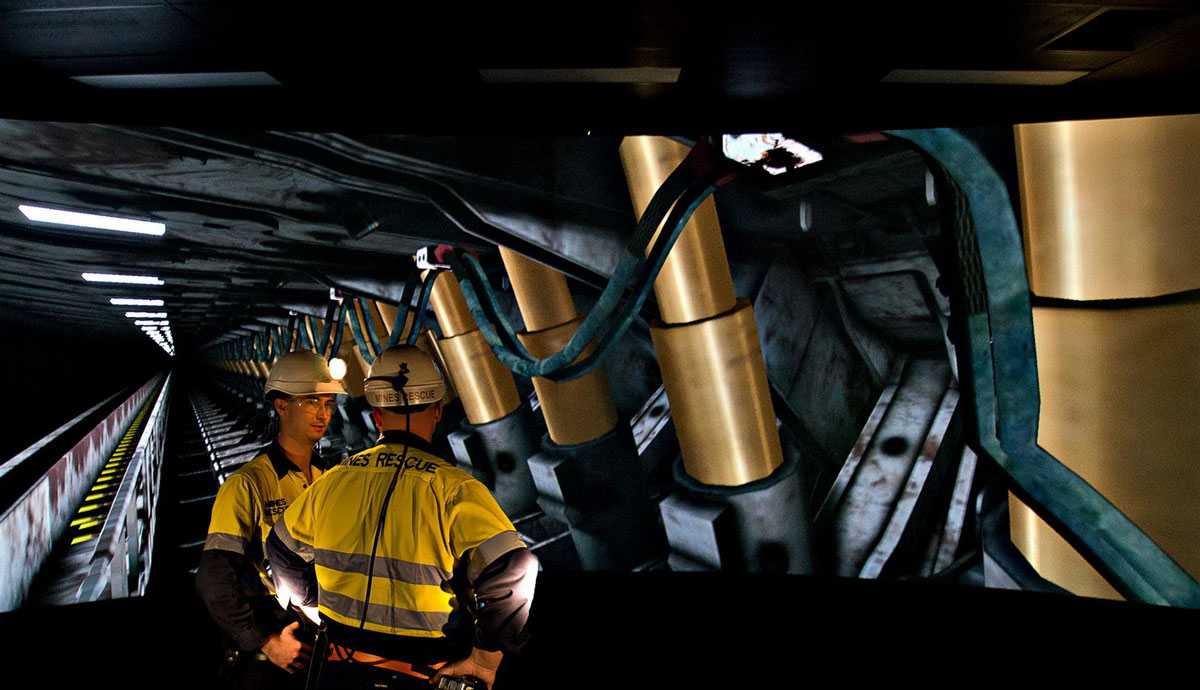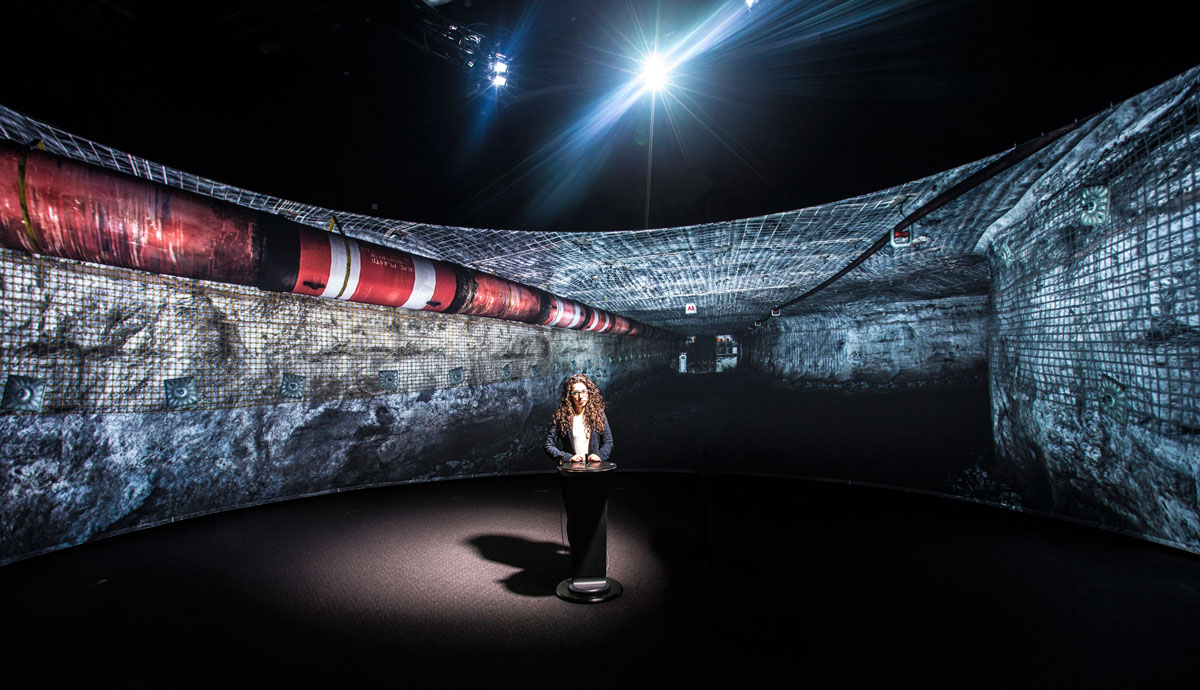June 30, 2015
Virtual to reality: mine training keeping workers safer
Simulating dangerous environments through virtual reality training is helping save lives in the coal industry.
UOW and SMART Infrastructure Facility PhD student Shiva Pedram has been working with industry safety training provider Coal Services to measure the effectiveness of using immersive virtual reality to train miners and rescue brigades.
While miners have long had comprehensive classroom-based training to learn about the hazards they will encounter, it’s a world away from being confronted with the environment of being underground.
To overcome this challenge, Coal Services has developed a cinema-like virtual reality room with a 360-degree screen that is 10 metres in diameter and 4 metres high and uses 12 cameras to project 3D images with full surround sound.
Up to eight miners in full protective gear can enter the room and experience simulated explosions, gas leaks or routine safety inspections. The immersive, virtual coalmine is as close as a person can get to being in a mine without entering a shaft.
Shiva has been conducting research to assess how well the virtual reality training bridges the gap between classroom and coalmine to effectively equip workers for the challenges they will face.
Her analysis has involved working with up to 400 miners who use Coal Services’ four facilities in New South Wales. The outcome of the study will improve the quality of training for the mining industry. The research is providing a better understanding of the gaps between training needs and simulation capabilities.
According to Resources and Energy NSW data, there were 2634 safety incidents in 2013-14 and the majority of these were in the coal industry. Yet, the number of underground coal mine injuries resulting in lost time has dropped by almost one third since 2009-10.
“The training offered by Coal Services has contributed significantly to this positive outcome,” Shiva said. “The training system gives employees the confidence to do their job well and the confidence to be able to handle situations when things go wrong.
“It’s a particularly acute problem for highly skilled rescue brigades whose individual and collective proficiency relies upon the ability of their training program to deliver scenarios that are as realistic as possible.
“This matters because these industries are huge part of Australia’s economy and we want to find the best way of training our workers for this high-risk environment so we are ensuring workers go home safe at the end of the work day.”

CS virtual reality technical manager Matthew Farrelly said CS’s history with UOW led to discussions about furthering research in the field of virtual reality training.
“There is actually quite a large body of research for simulator-based training in industries such as aviation and military, as well as operator training,” Mr Farrelly said. “However, we provide a niche training capability, which is general safety and awareness training as well as intense, hands-on mixed-reality training.
“We can look at the research that is similar to our industry and assume that we should get a similar result, but it is always valid to assess and quantify results within your own situation.
"The goal for Coal Services is to identify best practice for virtual reality based training. We will use the results of the research to support our products that deliver results and look to improve anything that we find is not best practice.”
Shiva Pedram completed her masters of Engineering Management at UOW in 2011 and is completing her PhD under the supervision of Professor Pascal Perez and Associate Professor Steven Palmisano.
Building upon experience with Coal Services and lessons learned from the training assessment study, SMART's research team envisions the transfer of the virtual reality training technology to other industries, such as construction or rail.
These industries face increasing challenges and risks in maintaining and redeveloping their infrastructure in busy transport corridors or urban centres as well as the growing use of subcontractors who have limited prior exposure to site risks.
“The technology has proved vital for the professional training of workers subjected to high-risk activities and hazardous situations because there are only limited opportunities to reproduce these scenarios during traditional training,” Shiva said.
“We want to help improve training in those industries through implementing virtual reality-based training inspired by what Coal Services has achieved so far.”
Additional images courtesy Coal Services.
